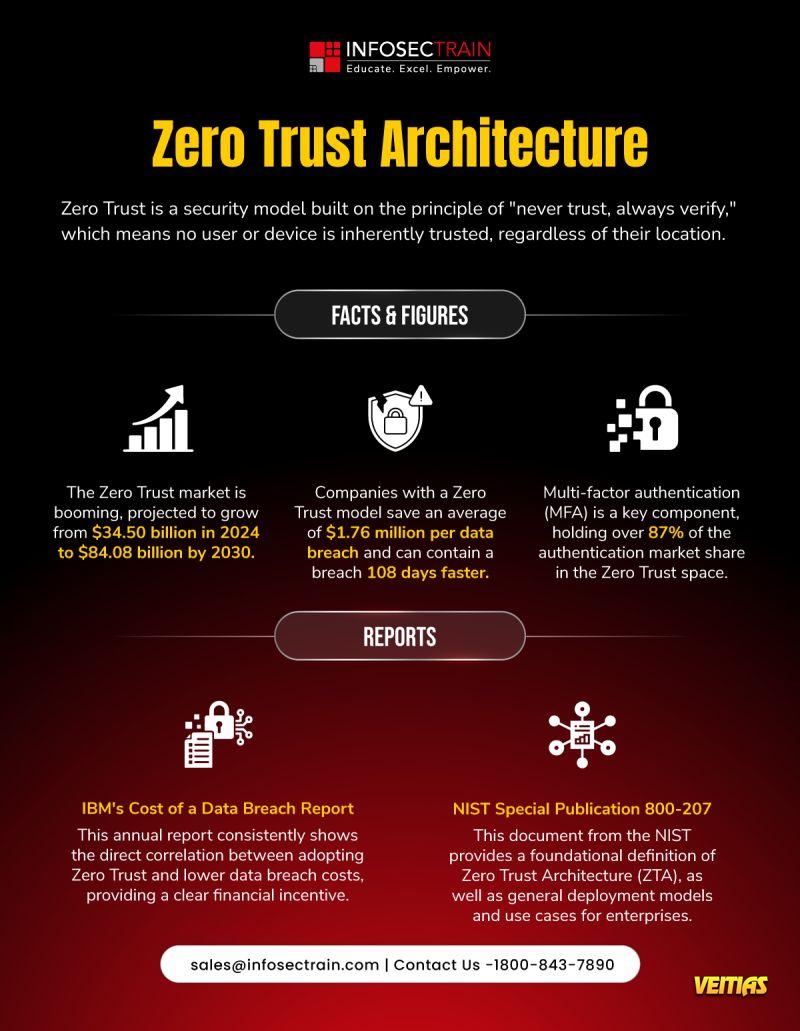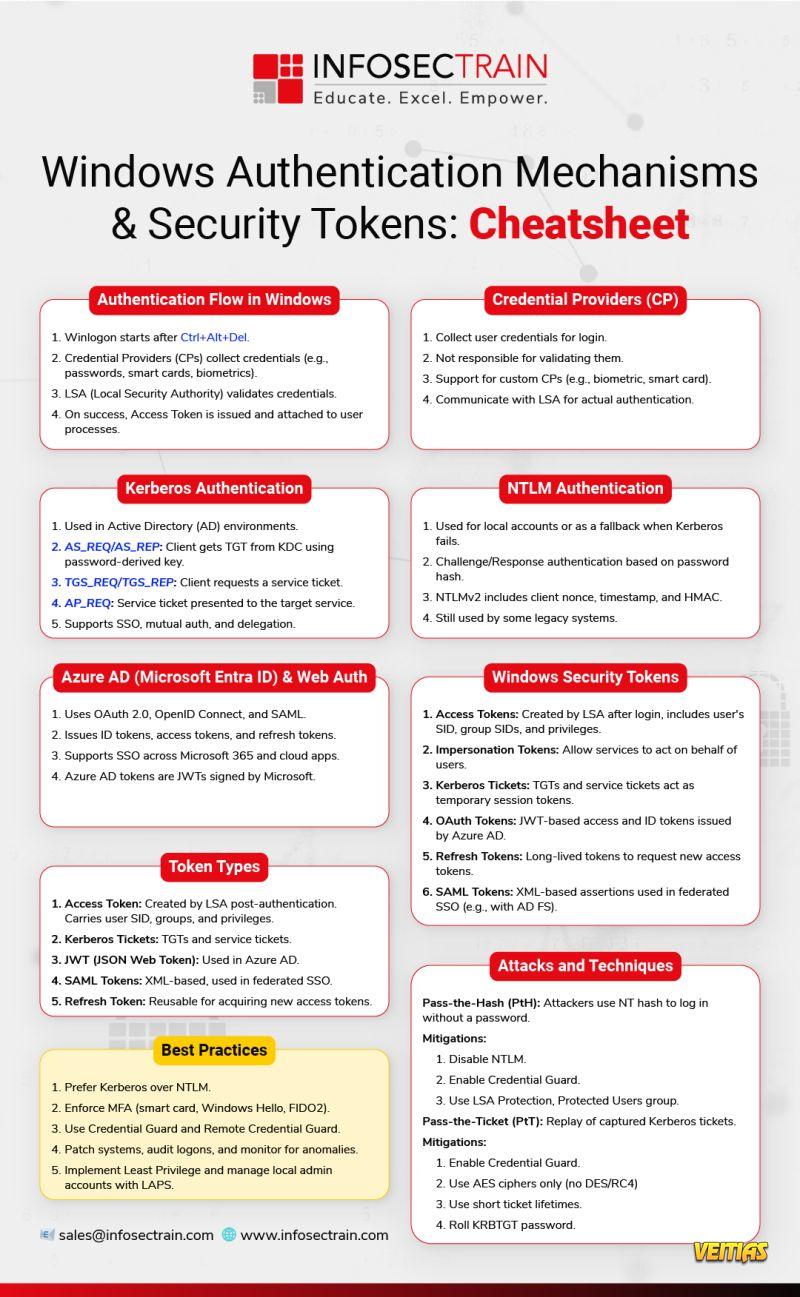𝐈𝐭’𝐬 𝐓𝐢𝐦𝐞 𝐓𝐨 𝐒𝐚𝐲 “𝐓𝐫𝐮𝐬𝐭 𝐎𝐧𝐜𝐞, 𝐒𝐞𝐜𝐮𝐫𝐞 𝐅𝐨𝐫𝐞𝐯𝐞𝐫” 𝐈𝐬 𝐎𝐯𝐞𝐫: 𝐖𝐞𝐥𝐜𝐨𝐦𝐞 𝐓𝐨 𝐓𝐡𝐞 𝐙𝐞𝐫𝐨 𝐓𝐫𝐮𝐬𝐭 𝐄𝐫𝐚!
𝐙𝐞𝐫𝐨 𝐓𝐫𝐮𝐬𝐭 = 𝐍𝐞𝐯𝐞𝐫 𝐓𝐫𝐮𝐬𝐭, 𝐀𝐥𝐰𝐚𝐲𝐬 𝐀𝐮𝐭𝐡𝐞𝐧𝐭𝐢𝐜𝐚𝐭𝐞
It’s not about denying access, it’s about providing the least amount of access after confirmation. Continuous authentication, the least privileges, and intense monitoring have become the norm.
𝐖𝐡𝐲 𝐈𝐭 𝐌𝐚𝐭𝐭𝐞𝐫𝐬:
Cyber attackers don’t have to ask for permission- all they need if the chance. Zero Trust takes that away.
𝐑𝐞𝐚𝐝 𝐦𝐨𝐫𝐞 𝐡𝐞𝐫𝐞: https://www.infosectrain.com/blog/zero-trust-vs-traditional-security/
𝐑𝐞𝐚𝐝𝐲 𝐭𝐨 𝐦𝐚𝐬𝐭𝐞𝐫 𝐙𝐞𝐫𝐨 𝐓𝐫𝐮𝐬𝐭?
Enroll in Infosec Train 𝐂𝐞𝐫𝐭𝐢𝐟𝐢𝐜𝐚𝐭𝐞 𝐨𝐟 𝐂𝐨𝐦𝐩𝐞𝐭𝐞𝐧𝐜𝐞 𝐢𝐧 𝐙𝐞𝐫𝐨 𝐓𝐫𝐮𝐬𝐭 (𝐂𝐂𝐙𝐓) and become the professional organizations require in this new era of cyber security!
#ZeroTrust #CyberSecurity #CCZT #InfosecTrain #DataSecurity #Infosec #ITSecurity #CyberAwareness #SecurityTraining #AIandSecurity #TechTrends
𝐙𝐞𝐫𝐨 𝐓𝐫𝐮𝐬𝐭 = 𝐍𝐞𝐯𝐞𝐫 𝐓𝐫𝐮𝐬𝐭, 𝐀𝐥𝐰𝐚𝐲𝐬 𝐀𝐮𝐭𝐡𝐞𝐧𝐭𝐢𝐜𝐚𝐭𝐞
It’s not about denying access, it’s about providing the least amount of access after confirmation. Continuous authentication, the least privileges, and intense monitoring have become the norm.
𝐖𝐡𝐲 𝐈𝐭 𝐌𝐚𝐭𝐭𝐞𝐫𝐬:
Cyber attackers don’t have to ask for permission- all they need if the chance. Zero Trust takes that away.
𝐑𝐞𝐚𝐝 𝐦𝐨𝐫𝐞 𝐡𝐞𝐫𝐞: https://www.infosectrain.com/blog/zero-trust-vs-traditional-security/
𝐑𝐞𝐚𝐝𝐲 𝐭𝐨 𝐦𝐚𝐬𝐭𝐞𝐫 𝐙𝐞𝐫𝐨 𝐓𝐫𝐮𝐬𝐭?
Enroll in Infosec Train 𝐂𝐞𝐫𝐭𝐢𝐟𝐢𝐜𝐚𝐭𝐞 𝐨𝐟 𝐂𝐨𝐦𝐩𝐞𝐭𝐞𝐧𝐜𝐞 𝐢𝐧 𝐙𝐞𝐫𝐨 𝐓𝐫𝐮𝐬𝐭 (𝐂𝐂𝐙𝐓) and become the professional organizations require in this new era of cyber security!
#ZeroTrust #CyberSecurity #CCZT #InfosecTrain #DataSecurity #Infosec #ITSecurity #CyberAwareness #SecurityTraining #AIandSecurity #TechTrends
🚫 𝐈𝐭’𝐬 𝐓𝐢𝐦𝐞 𝐓𝐨 𝐒𝐚𝐲 “𝐓𝐫𝐮𝐬𝐭 𝐎𝐧𝐜𝐞, 𝐒𝐞𝐜𝐮𝐫𝐞 𝐅𝐨𝐫𝐞𝐯𝐞𝐫” 𝐈𝐬 𝐎𝐯𝐞𝐫: 𝐖𝐞𝐥𝐜𝐨𝐦𝐞 𝐓𝐨 𝐓𝐡𝐞 𝐙𝐞𝐫𝐨 𝐓𝐫𝐮𝐬𝐭 𝐄𝐫𝐚!🔐
☑️ 𝐙𝐞𝐫𝐨 𝐓𝐫𝐮𝐬𝐭 = 𝐍𝐞𝐯𝐞𝐫 𝐓𝐫𝐮𝐬𝐭, 𝐀𝐥𝐰𝐚𝐲𝐬 𝐀𝐮𝐭𝐡𝐞𝐧𝐭𝐢𝐜𝐚𝐭𝐞
It’s not about denying access, it’s about providing the least amount of access after confirmation. Continuous authentication, the least privileges, and intense monitoring have become the norm.
☑️ 𝐖𝐡𝐲 𝐈𝐭 𝐌𝐚𝐭𝐭𝐞𝐫𝐬:
Cyber attackers don’t have to ask for permission- all they need if the chance. Zero Trust takes that away.
🔗 𝐑𝐞𝐚𝐝 𝐦𝐨𝐫𝐞 𝐡𝐞𝐫𝐞: https://www.infosectrain.com/blog/zero-trust-vs-traditional-security/
👉 𝐑𝐞𝐚𝐝𝐲 𝐭𝐨 𝐦𝐚𝐬𝐭𝐞𝐫 𝐙𝐞𝐫𝐨 𝐓𝐫𝐮𝐬𝐭?
Enroll in Infosec Train 𝐂𝐞𝐫𝐭𝐢𝐟𝐢𝐜𝐚𝐭𝐞 𝐨𝐟 𝐂𝐨𝐦𝐩𝐞𝐭𝐞𝐧𝐜𝐞 𝐢𝐧 𝐙𝐞𝐫𝐨 𝐓𝐫𝐮𝐬𝐭 (𝐂𝐂𝐙𝐓) and become the professional organizations require in this new era of cyber security!
#ZeroTrust #CyberSecurity #CCZT #InfosecTrain #DataSecurity #Infosec #ITSecurity #CyberAwareness #SecurityTraining #AIandSecurity #TechTrends
0 Комментарии
0 Поделились
746 Просмотры
0 предпросмотр











